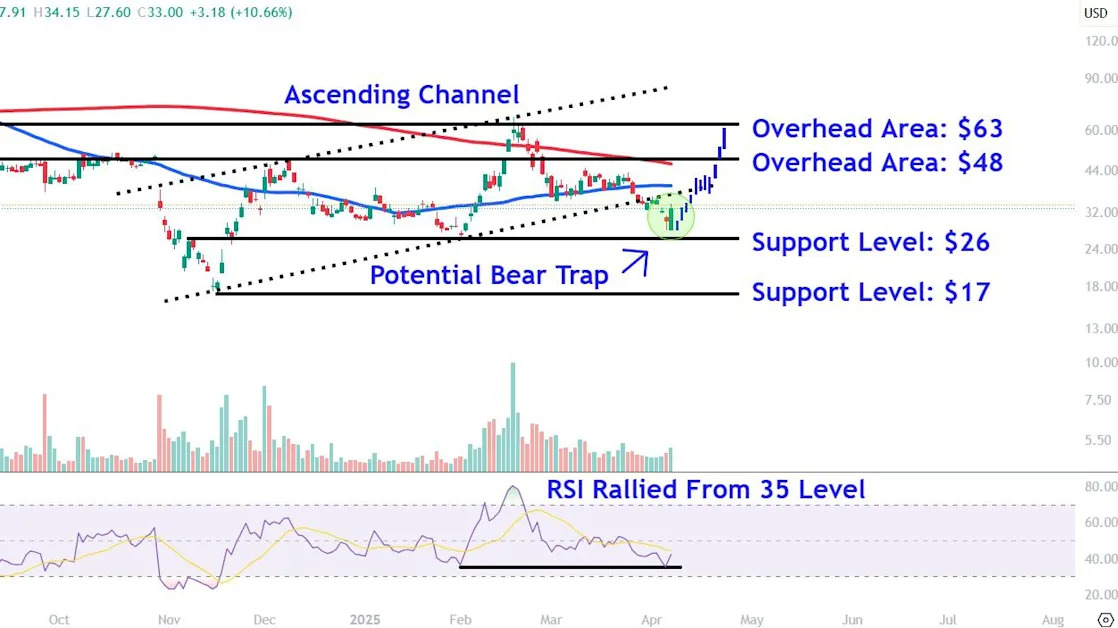
Watch These Supermicro Price Levels as Stock Soars After Tariff-Induced Selling
Key Takeaways
Super Micro Computer ( SMCI ) shares jumped in early trading Tuesday, adding to an 11% surge yesterday, as investors bid up the server marker’s stock after a few days of big losses during the broader market's tariff-fueled sell-off .
Sentiment surrounding the stock likely received a boost from J.P. Morgan analysts who recently pointed out that the company would only need to increase its global prices by 4%, based on the portion of its hardware that would be affected by tariffs.
Supermicro shares saw significant price swings in both directions during the first quarter as the company dealt with accounting issues that raised concerns of a potential Nasdaq delisting until the company met the exchange’s deadline to file several delayed financial reports in February . The stock was up 6% at around $35 in recent trading.
Below, we break down the technicals on Supermicro’s chart and identify major price levels that investors may be monitoring.
Potential Bear Trap
After gapping lower in late October, Supermicro shares oscillated within an orderly ascending channel until breaking down below the pattern’s lower trendline toward the end of last month.
However, despite falling to its lowest level since early February last week, the stock completed a bullish engulfing pattern in Monday’s trading session, potentially forming a bear trap —a trading event that lures investors to sell upon a breach of major support before the price makes a sudden move higher.
What’s more, Monday’s buying coincided with the relative strength index (RSI) rallying from a reading of around 35, the same level the indicator bottomed at in early February before the stock roughly doubled over a two-week period.
Let’s identify two major overhead areas to watch on Supermicro’s chart amid the potential for follow-through buying, and also point out vital support levels worth monitoring.
Major Overhead Areas to Watch
A decisive close back above the ascending channel’s lower trendline could trigger a rally to around $48. This level, currently just above the closely watched 200-day moving average , connects a range of comparable trading activity on the chart extending back to last year’s prominent August swing low .